Working on a NASA-CSA project was a dream come true - and 13 years on, I’ve travelled the world unravelling the secret of contemporary microbialites.
I wandered into my mentor’s office for our first official meeting after taking a Ph.D. position at the University of British Columbia to inquire about potential projects. My mentor informed me that we are looking for a student to work on a NASA-CSA project named MARS-Life.
While I had been fascinated by space since childhood due to my love of Sci-Fi literature, including The Martian Chronicles by Ray Bradbury in 1950, and being an immense original Star Trek fan, working on a NASA project was a dream come true.
“Have you ever heard of stromatolites?” my adviser said. I immediately said “No,” but afterwards clarified, “You mean the rock formations in caves?”
My mentor said ‘No,’ then added, “These are microbialites, which are these particular types of microbial mats that over time transform into stone” - and these turned out to be part of the NASA-CSA project.
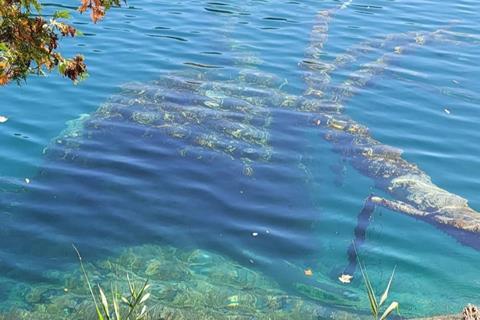
I’ve worked on contemporary microbialites all around the world since then. Shark Bay, Australia; numerous places in Mexico (including Cenote Azul and Bacalar); Pavilion and Kelly Lake in British Columbia; and Clinton Creek in the Yukon Territory, Canada.
My work includes metagenomic efforts in Clinton Creek, Pavilion Lake, and Shark Bay to enumerate microbes, their viruses and the accompanying expected microbial metabolisms.
I never imagined that I would travel all over the world to study these structures, that I would keep them like pets in my lab, that they would be important for educating future scientists, and that they would still contain secrets to our fundamental knowledge of the biosphere and its biogenesis.
What is a microbialite?
Microbialites are carbonate organosedimentary deposits generated by microbial communities. They are classified based on their physical and geological characteristics, with two main groups: internally laminated (a fine layer at least 1 mm thick) and unlaminated (no layers).
Stromatolites (i.e., Greek strôma meaning ‘layer’), which are laminated layered carbonates but non-spherical; oncolites, which are both layered and spherical; and leiolites, which have amorphous internal structures, are examples of laminated microbialites. The most prevalent unlaminated thrombolites (i.e., Greek thrómbos meaning ‘clot’), which feature irregular clot carbonate structures, and dendrolites (i.e., Greek déndron meaning ‘tree’), branched carbonate projections that appear like tree branches, are among the unlaminated.
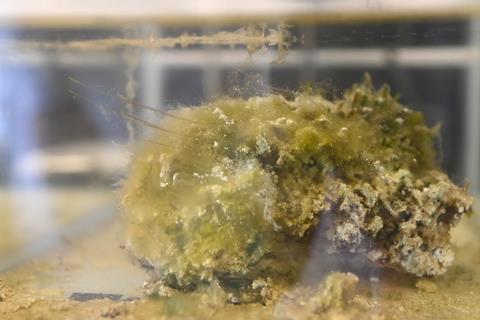
Microbialites have been investigated for over a century, with a German geologist initially referring to them as “stromatoliths,” to characterize Triassic stromatolites. Thrombolites were initially distinguished from stromatolites by their uneven clot arrangement of carbonate structures.
Every year, new microbialites are discovered in both modern and ancient fossil forms. Many people believed that modern microbialites were uncommon and scarce - however this is not the case. Microbialites truly have cosmopolitan distributions, ranging in environments from aquatic to terrestrial.
Early life
Microbialites are the oldest known enduring ecosystems and may be the first evidence of life on Earth. Sulfate reduction, methanogenesis, nitrogen fixation, and photosynthesis are among the earliest biogeochemical processes mediated by Earth’s microbes that are present within microbialites.
This diverse microbial community contributes to the subsequent lithification of biological material by trapping and sedimenting minerals into stone, which can be preserved for billions of years.
The oldest microbialites stretch back 3.7 billion years. These ancient microbialites (often stromatolites) are fossils with no active living microbes contributing to their formation.
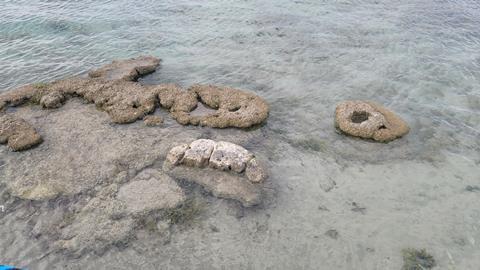
Modern versions seen today have active living microbes involved in their formation. This is a debatable subject about the presence of organisms - yet, cyanobacteria are crucial baseline keystone species for the microbialite ecosystem. Could some microbialites be anoxic (devoid of oxygen) and produce mats in the absence of cyanobacteria? There could be; however, we have yet to discover modern microbialites that do not share their community with cyanobacteria.
As a result, a) cyanobacteria may be considerably older than we realize, or b) the ancient stromatolites, which predate the evolution of cyanobacteria, were generated by microbes that no longer exist on Earth or there are yet to be discovered anoxic microbes that produce microbialites with filaments similar to those found in cyanobacteria.
My niche
My lab group studies viruses - in fact, the viruses of everything, from viruses in the guts of mammals (e.g., bats and rodents), soil/rhizosphere (i.e., the gut of plants), and modern microbialites.
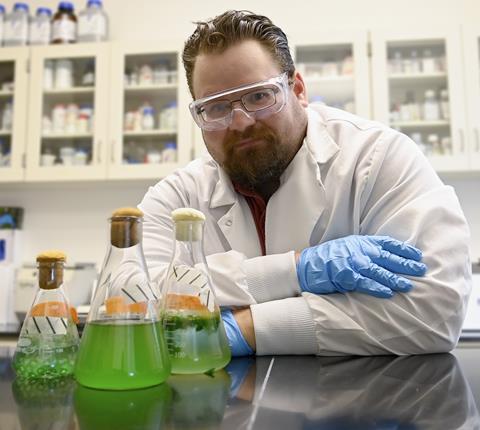
Viruses are the most numerous biological identities on Earth, with a global abundance of 1031. This is eight orders of magnitude larger than a mole of atoms (i.e., 6.022 x 1023 atoms, Avogadro’s number) and ten orders of magnitude larger than the stars in the observable universe (1021). In addition, viruses lyse 20–50% of the microbial biomass in Earth’s oceans daily, with at least 1023 viral infections.
My research in microbialites is primarily focused on cyanobacteria and their related cyanophage (i.e., cyanobacterial eaters, bacterial viruses), which are the principal architects of the microbialite structure. Cyanobacteria produce filaments that develop into mat structures that bind minerals, accrete carbonate minerals (e.g., calcium or magnesium), and allow carbonate minerals to settle.
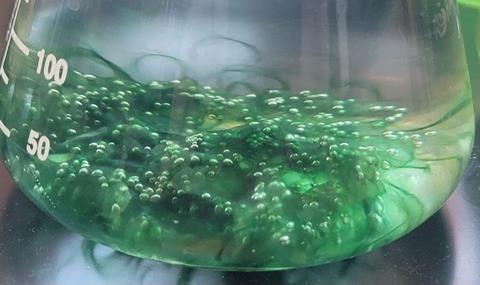
Within the mats, cyanobacteria emit nutrients that attract heterotrophs, who return nutrients to the cyanobacterial mat. Cyanobacterial microbial mats produce a wide range of metabolites, including sugars, amino acids, and lipids, which feed a diversified microbial population found in microbialites.
I have proposed a viral-mediated mechanism for the transition from microbial mat to stromatolite. Viruses may play a direct or indirect role in carbonate precipitation and/or mineral nucleation, or they may manipulate microbial metabolism to alter the transition from a microbial mat. Viral lysis may indirectly contribute to microbialite production by mineral release and improve photosynthesis via lytic nutrient release.

Viruses can also alter the metabolism of their bacterial hosts, resulting in carbonate-forming circumstances. NASA Exobiology has awarded us a funding to further explore these mechanisms within microbialites, including the viral involvement in their production. Many questions about these structures remain unanswered. I’m looking forward to a long career of finding those answers.
What is the future?
We’ve been studying microbialites and their genesis across geological time for about a century. Modern microbialites serve as laboratories in which we may test our knowledge of biology, geology, and biogeochemistry. Microbialites, for example, have been trapping greenhouse gases in rock over the majority of Earth’s history. Understanding the mechanisms that allow them to do so could enable us to store megatons of carbon within stone, eliminating it from the atmosphere.
Furthermore, cyanobacteria have been studied for their potential application in producing carbonates and in self-healing concrete. Using the power of the sun and microbes to produce green buildings could be the future. Furthermore, self-healing biogenic concrete may be more solid and lasting. Consider a scenario in which synthetic biology of microbes would solve our most pressing issues, such as climate change, infectious disease, cancer, and others.
Richard Allen White III, PhD is a computational and synthetic virologist, and an Assistant Professor of Bioinformatics and Genomics at the University of North Carolina at Charlotte. He is an associated member of North Carolina Research Campus (NCRC) in Kannapolis, NC and the Center for Computational Intelligence to Predict Health and Environmental Risks (CIPHER), both focused on public and environmental health. He has further affiliations to Astrobiology via NASA’s Network For Life Detection and the Australian Centre for Astrobiology at the University of New South Wales, Sydney, Australia.
Dr White III obtained his PhD in Microbiology and Immunology at the University of British Columbia in Vancouver, BC. He obtained his BS and MS at California State University - Hayward in Cellular and Molecular Biology with studies in molecular virology of HIV/GBV-C (now Human Pegivirus G) for his masters work.







No comments yet